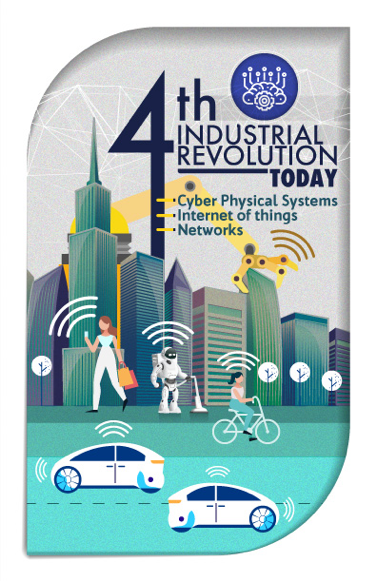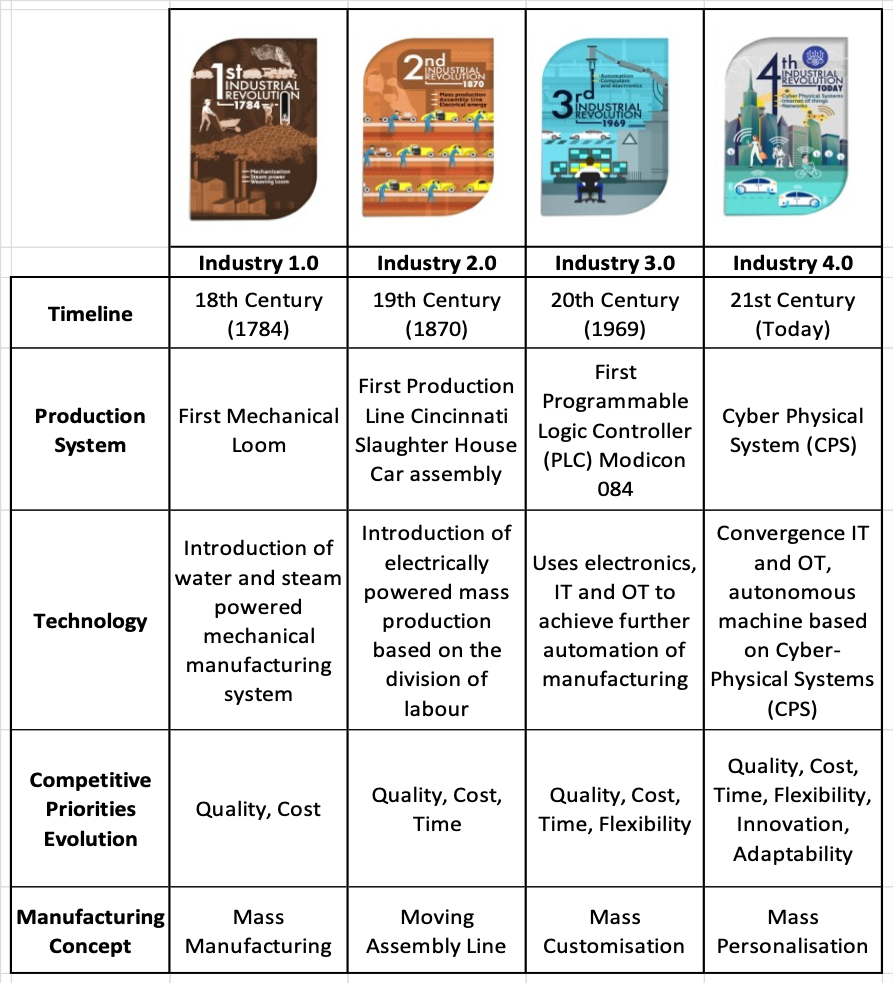What is Industry 4.0 And How It Began (Part 3)
Industry 3.0: Process Control & Digitisation
Industry 3.0: In 1968, the development of electronic and IT systems landed the first programmable logic controller (PLC) in Modicon. The advent of the PLC enabled the automation of processes previously controlled by electromechanical devices.
This innovation was a significant indicator of Industry 3.0. Before that, manufacturing was on designing and using increasingly more efficient production processes. Since the beginning of Industry 3.0, however, digital process control has become the critical enabler of the next revolutionary surge of manufacturing innovation and productivity.
Moving from analog to digital production process control is the hallmark of the third industrial revolution. Electronics and information technology matured as companies introduced semiconductors and later mainframe and personal computers (PCs). Sometime later, automated manufacturing production processes and supply chains went global.
Industry 3.0: Shaping Our World Today
Industry 3.0 manufacturing is part of a familiar world, but its innovations still leave their mark on how we live and work today. For manufacturing, the most influential developments came from digital methods of running, automating, and controlling production processes.
Memory controller units (MCU) and computers — These now-mature technologies have been around for a half-century. Currently, they drive the automation of an entire production process and will continue to evolve with the improvement in hardware, software, and communication.
Robots — The iconic manufacturing technologies of our time, robots perform programmed sequences of tasks. Completing an entire production process without human intervention is the ‘holy grail’ of modern manufacturing. While far from an imminent reality, it is one of the important goals of Industry 4.0 production innovation.
Digital manufacturing processes and control — Smarter software, more able robots, and new production processes such as additive manufacturing are the pillars of our current era of advanced manufacturing.
When used together, digital processing and control technologies can bring down the costs of smaller, more diverse batches of products. Consequently, this brought about a retail era symbolised by goods customised to buyers’ tastes and increasingly personalised demands.
Industry 3.0: Third Industrial Revolution


This more efficient, lower-cost production will not only determine how goods are produced but where. As manufacturing companies use technology to move from mass to customised production, some offshore production is moving back to the countries with higher manufacturing cost.
As labour costs become a smaller part of total production costs, companies can afford to move closer to their customers. It also means lower transport costs and faster response times to changes in demand and customer expectations.
The Dawn of Industry 4.0
The third Industrial Revolution began in the late 1960s. Experts debate whether we’re still in Industry 3.0 or have moved on to an era of more advanced production methods.
Fourth Industrial Revolution


Wherever we are in the chronology of industrial development, one thing is certain. Manufacturing process automation enabled by memory-programmable controls and digital technologies has already left their mark on how we produce and distribute goods.
More advanced technologies, which automate an entire production process without human assistance, lie in the province of Industry 4.0. This future development will use production systems controlled by computer technology and humans working together. Furthermore, the volume of autonomous production will expand when processes connect via the internet and internet-ready assets.
These new systems, which support communication between manufacturing processes and facilities, are the next step in production automation. That means the day of smart factories and fully automated, hands-off manufacturing are possible and might be coming soon.
Industry 1.0 to Industry 4.0 Summary


Industry 4.0 Portal Articles
What is Industry 4.0 And How It Began (Part 1) (Part 2) (Part 3)
The Smart Factory – 6 Key Principles You Should Achieve
Written by Colin Koh, Senior Business Development Manager, Industry 4.0 Consultant. This Industry 4.0 Article Series is aimed to enlighten readers about everything they need to know about Industry 4.0 and its application to technologies and benefits to companies and consumers.

Share this article on social media